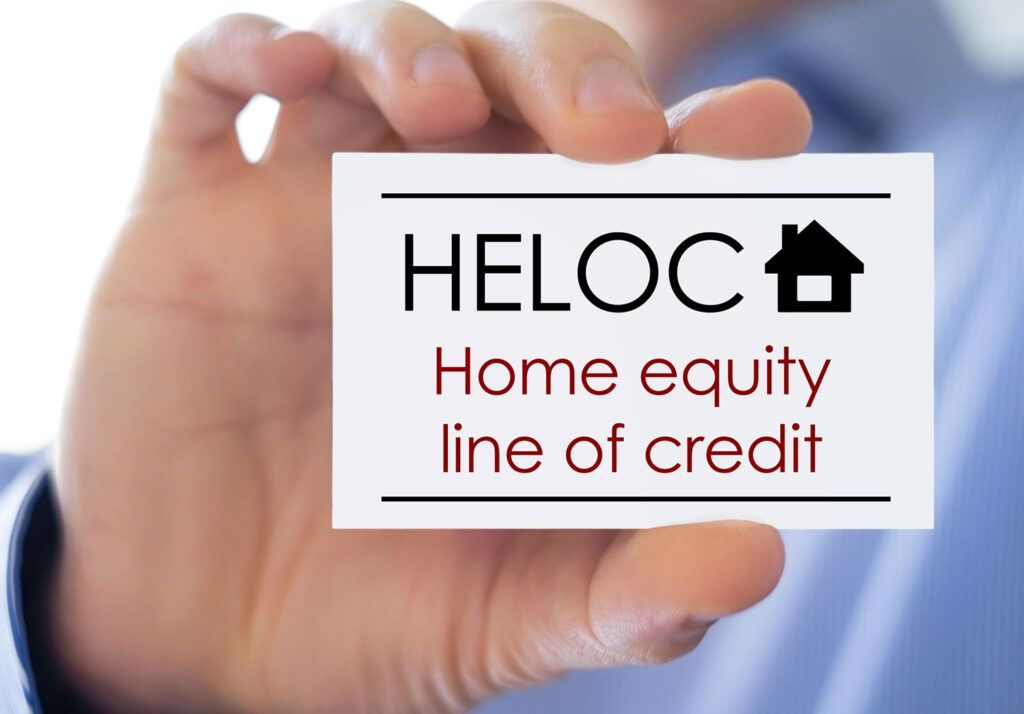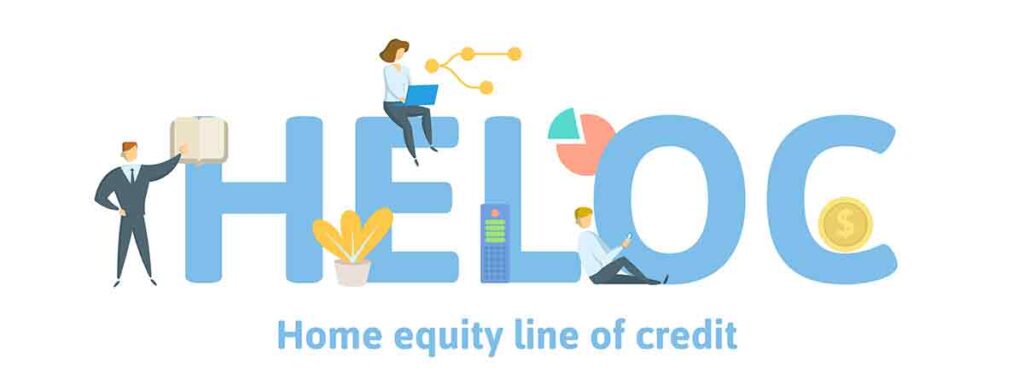Pros and Cons of a Home Equity Line of Credit (HELOC)

Building equity in a home means that you’ve paid off part of your mortgage and are on your way to complete homeownership. A home equity line of credit, also known as a HELOC, allows you to borrow money against that equity for repairs, home upgrades, or debt payoff. HELOCs are often beneficial to homeowners, but they may not be right for every situation.
Learning typical HELOC pros and cons can help you determine whether you should use a HELOC or seek other forms of debt consolidation or home upgrade financing.
Looking for a HELOC alternative? Check out Unlock - a home equity agreement option that lets you access between $30,000 and $500,000 in your home’s equity without taking out a loan!
HELOC Pros and Cons
| Pros | Cons |
| ✅ HELOCs can fund home improvement projects | ❌ The home acts as collateral |
| ✅ Long draw periods allow for continued borrowing | ❌ Can be easy to spend more than intended |
| ✅ You only pay for what you borrow | ❌ Adjustable interest rates can vary monthly payments |
| ✅ Low interest rates compared to personal loans | ❌ Terms and requirements can be strict |
| ✅ No closing costs or fees |
What Is a HELOC?

Just like there are several types of home loans to help you afford a home, there are several forms of financing to help you upgrade, fix, or renovate your home. A HELOC is one of them.
HELOCs are lines of credit, similar to a credit card. They leave a specific amount open for you to borrow money, but you can’t borrow more than your line of credit allows. Your line of credit depends on how much equity you have in your home. Home equity is the amount of your home you actually own because you’ve paid that amount of your mortgage.
Related reading: Hometap Review: Get Cash from a Home Equity Investment
How Does a Home Equity Line of Credit Work?
A home equity line of credit is based on your home’s equity. So, if you have a $150,000 mortgage that you’ve paid $50,000 on, and your home is currently valued at $180,000, you have $80,000 in home equity.
However, most banks want you to keep at least 15% to 20% equity in your home at all times. Therefore, you may not be eligible for a HELOC with the full value of your home’s equity.
In this example, let’s say a bank requires you to maintain 20% equity in your home. To find out how much HELOC you may qualify for, you’ll multiply your home’s value ($180,000) by 80%, equaling $144,000. Then, subtract your remaining mortgage balance ($100,000) from that number, giving you $44,000. With this bank, you could qualify for a $44,000 HELOC.
Once you have a HELOC, you typically have a draw period, which is the amount of time you can access your credit line. These are usually 10 to 15 years. During this time, HELOCs usually require interest-only payments. After the draw period ends, repayment begins, requiring you to pay principal plus interest on the loan amount you borrow.
Truss Financial Group offers HELOCs to non-traditional borrowers. Get started today!
What Is the Difference Between a HELOC and a Home Equity Loan?
It can be easy to confuse a HELOC with a home equity loan, as they have similar names and serve similar purposes. However, a HELOC lets you borrow just as much as you need up to your maximum credit allowance. On the other hand, a home equity loan acts as a typical loan, giving you a set amount of money to spend as you’d like.
Home equity loans are usually used for large expenses, like college tuition or a significant home project like a new roof, siding, and windows. Meanwhile, HELOCs can help you budget for small or large expenses over time, as they allow you to use only the credit you need when you need it to avoid paying interest on money you haven’t used.
Try out Unlock instead to leverage your home equity without monthly payments and interest!
Typical HELOC Requirements

The best mortgage lenders have different requirements for HELOCs. For example, some might require you to have more home equity than others, while some might allow higher debt-to-income ratios than others.
Here are the typical requirements you can expect to qualify for a HELOC:
- Credit score in the 600s (usually, a minimum of 620)
- At least 15% to 20% equity in the home
- A debt-to-income ratio maximum of 40% to 50%
- Solid income history showing that you can repay your HELOC
- Property debt, also known as loan-to-value (LTV) ratio of 85% or less
What are the Advantages and Disadvantages of a HELOC?

Understanding HELOC pros and cons can help you feel more informed as you decide the best path toward cashing in on your home’s equity. A HELOC can certainly make large expenses more affordable, especially compared to a personal loan, but this revolving credit line also comes with some disadvantages.
Pro: HELOCs Can Fund Home Improvement Projects
A prime reason homeowners choose a HELOC loan is to finance home improvements and renovations. As home improvement loans, HELOCs can fund large projects over an extended period, allowing the borrower to make smaller monthly payments than they might have to with a personal loan. HELOCs also typically offer a larger amount of money than loans do, allowing homeowners to fund costlier projects.
Technically, HELOCs can be used for just about anything you need them for, including paying off student loan debt, buying a new vehicle, or consolidating debts with a higher interest rate.
Pro: Long Draw Periods Allow for Continued Borrowing
A HELOC’s draw period gives homeowners time to continue using their line of credit to borrow the money they need. Most draw periods on HELOCs are 10 to 15 years, so homeowners can continue making home repairs or using their credit line in other ways for that length of time.
During the draw period, most lenders only require borrowers to make payments on interest, keeping their monthly payments low as they borrow against their equity.
Related reading: Truss Financial Group: Non-Traditional Loans
Pro: You Only Pay for What You Borrow
Unlike a home equity loan that gives you a set loan amount you need to pay back over a series of monthly payments, a HELOC lets you borrow only what you need. This can reduce the amount you pay and ensure that you don’t finance more money than necessary.
For example, say you want to renovate your kitchen and estimate the costs to be about $50,000, so you get a home equity loan for $55,000 to leave a little bit of wiggle room for unexpected costs. However, the renovation only requires $45,000. If you used a HELOC, you’d only finance the $45,000 you used. Meanwhile, with a home equity loan, you finance the full $55,000 you borrowed.
Pro: Low Interest Rates Compared to Personal Loans
Personal loans can be used to finance large purchases, but they typically have much higher interest rates than HELOCs. That means that if you use a personal loan to finance your roof replacement, you may end up paying more interest over time than with a HELOC.
Like interest rates on loans, interest rates on HELOCs vary over time based on the market. Still, you can usually count on them being at least 1% to 2% lower than you’d qualify for with a personal loan.
Pro: No Closing Costs or Fees
Most banks and lenders do not charge closing costs or fees on HELOCs, meaning that you usually won’t pay anything to apply for, maintain, or close on your HELOC. However, home equity loans and second mortgages do often come with closing costs, just like your existing mortgage. If you’re looking for the simplest and most affordable way to borrow against your equity, a HELOC is often the best choice.
Con: The Home Acts as Collateral
To secure a HELOC, you have to use your home as collateral. This means that if you don’t pay your HELOC according to its terms, your home could be caught in the crosshairs.
Additionally, if you plan to sell your home while owing a balance on your HELOC, you’ll need to pay off your HELOC with the proceeds from your sale, essentially reducing the profit you make from the sale.
Con: Can Be Easy to Spend More Than Intended
Having a large line of credit can be convenient when you need to use it, but some HELOC borrowers find themselves in a debt hole that’s difficult to get out of when they spend more than they intended, simply because the money is there to use.
It’s important to remember that although your payments might be low during the draw period, they typically get much higher when you reach the repayment period. A $400 monthly payment could escalate to $800 or more in the repayment phase, which can be difficult to manage if you don’t budget for it ahead of time. Being mindful of this and using only what you need from your HELOC can help you avoid a cycle of debt later.
Con: Adjustable Interest Rates Can Vary Monthly Payments
Although your mortgage can have either a fixed interest rate or variable interest rate, also known as an adjustable interest rate, HELOCs typically only offer the latter, at least to start with. Some lenders allow you to convert some of your owed amount to a fixed rate later, but you’ll still have an adjustable rate for any additional credit you borrow against.
Therefore, you might have a low starting interest rate, but that rate can fluctuate over time, which can increase your monthly payments to pay off your balance.
Con: Terms and Requirements Can Be Strict
HELOCs are essentially a type of second mortgage because, to secure one, you borrow money against your home equity. As such, you’ll need to meet stringent requirements for a lender to deem your financial situation worthy of a HELOC. That could mean having low debt, a high score, and a solid amount of equity built up in your home to qualify, which can leave many homeowners ineligible.
Is a Home Equity Line of Credit Right for Me?

When you have a home, you know that there will likely be repairs and upgrades you’ll need to make at some point. Many of those necessities can be costly, like replacing a roof or upgrading a heating system, but they’re crucial to keeping your home in its best shape. Several types of financing exist for homeowners, including cash out refinance loans, personal loans, or credit cards with a high credit limit.
However, a HELOC is one of the most popular types of financing for homeowners because it establishes a credit line to draw against as needed as opposed to paying a lump sum with a large monthly payment like a home equity loan. Still, it’s important to consider whether a HELOC fits into your personal finances before applying for one to cash in on your equity.
If you do decide on a HELOC, be sure to use it wisely. Avoid borrowing more from your credit line than you can reasonably afford to pay back. Also, remember that HELOCs usually only require borrowers to make payments on interest rather than principal through the draw period. It’s a good idea to pay more than your monthly obligation to help pay off your debt faster and keep equity in your home open in case you need it for a larger expense.
Consider the HELOC pros and cons outlined in this guide as you determine the best financial path for you and your home.
Truss Financial Group offers HELOCs to non-traditional borrowers. Get qualified today!